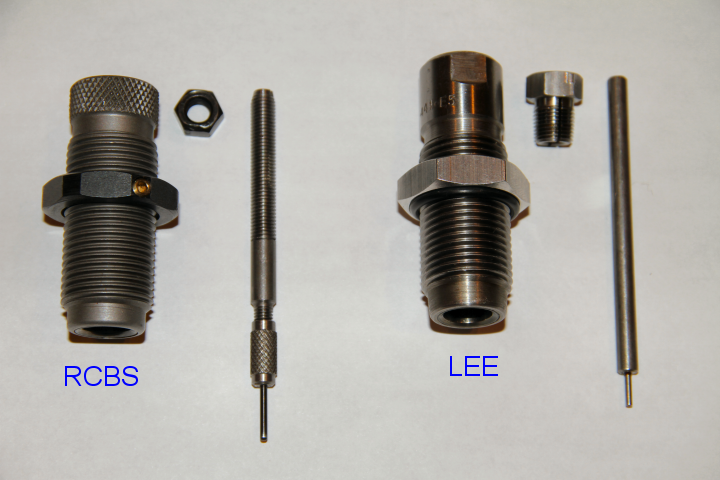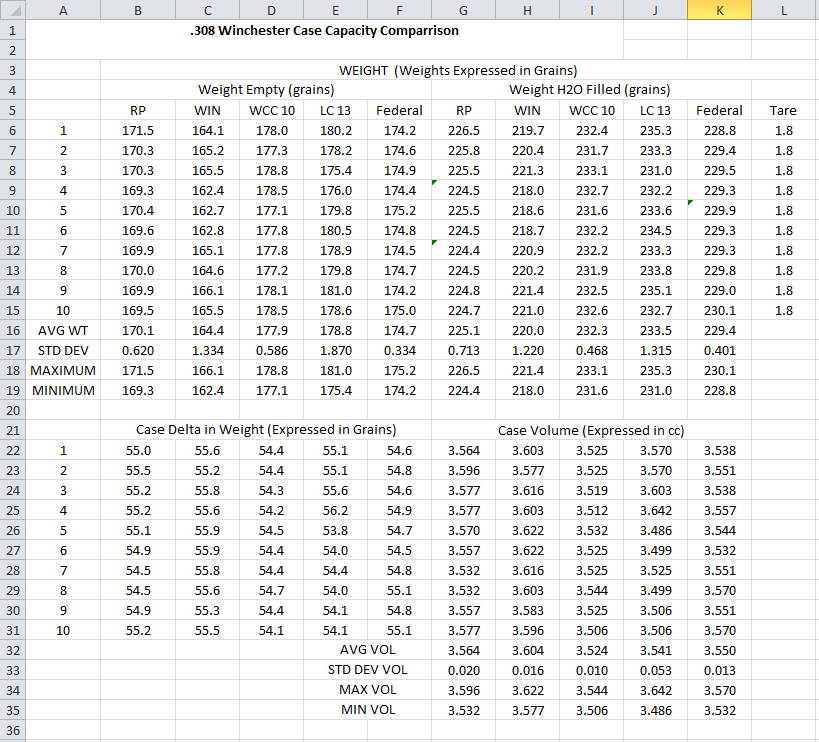CMV
Member
Couple of questions about 2 loads I'm working up. First I'm using new production LC brass. Midway had a pretty good deal on pulldown primed brass that was a lot cheaper than I could find 1x 308 brass anywhere. So I'm using that & just lightly running my sizing die in to true up the case mouth/neck. Pretty much to where I feel the decapping pin contact the primer. I'm getting about 1:30 fail to fire & think I must be damaging the primers doing this? Never messed with primed brass before - already have it fully processed to where it needs to be before I prime it. Also measuring & setting aside anything under length. Anyway, I think I should just run that up a little so the decapping pin can't touch the primer & then just take a full stroke like I was FL sizing the brass. But don't know if raising that much means I won't be sizing the neck/mouth properly. Is that what I should do or continue just lightly taking a partial stroke being more careful not to contact the primer?
Here's my bigger question though. I'm loading 165gr Hornady SST SP BT and 125 GR Speer TNT HP. Both in that primed LC brass, both with IMR 4895, both worked up & within a few tenths of published max loads.
Problem is POI is different. About a 6" elevation change @ 100 yds. Both will group well (after an insane amount of effort fixing other problems with rifle...), just too drastic a difference in POI switching between them. The 165 would be for larger critter, the 125 for smaller. So I'm guessing I need to slow one down a bit but not sure which one or what getting their POI @ 100 yds means at other ranges. As both loads are today, If I zero for the 165 gr load, the 125gr will be about 6" low & 1" left.
To add further complexity I'm making a stainless muzzle brake that will no doubt further change POI for both once installed. So getting them to match today just to have that change in a few days is pointless so will see where they both print after that is added. But once that is installed and assuming they both still have noticeably different POI what I need to know is:
(1) What is right way to get MV's for each where they need to be to hit at roughly same spot? Assuming I'd want the larger critter load at higher MV and then slow down the varmint load - a little slower .308 is probably still overkill on a ~40lbs coyote or similar?
(2) How do I figure out what that means for where each hits at different distances if they do hit at same spot at 100 yds (or 200 or 300 - my range goes 50 - 300 yds so anything in between there). Is there free/cheap ballistics software that will tell me this or do I just need to do trial & error to get them the same at X yds & then note what they do at other distances?
I'm not a hunter. Rifle & ammo is for a hunter. So a lot of things I just don't know that are specifically related to hunting vs general target/precision shooting. Does it make sense to even have 2 separate loads for ~140 lbs deer and then smaller critters like coyotes, hogs, bobcats, coons, etc? What would be the appropriate range to zero a .308 for hunting? I'm using 100 yds right now just for convenience, but if some other range is typically where you'd make a shot at various critters, I should probably zero for that.
Also to note - first time using IMR 4895. So far I really like how my Hornady dispensing scale handles it. This is also my first time dealing with compressed loads. The 125 load isn't at published max but I don't think I can speed it up any. The case is absolutely full & I'm assuming that's due to a little less volume due to military brass. Notebook is at home but I want to say right around 46-47gr, 2.800" COAL. I have to tap the powder funnel to settle the charge when filling case just to get that much in & not spill a little.
As usual, thanks for the help with my dumb questions
Here's my bigger question though. I'm loading 165gr Hornady SST SP BT and 125 GR Speer TNT HP. Both in that primed LC brass, both with IMR 4895, both worked up & within a few tenths of published max loads.
Problem is POI is different. About a 6" elevation change @ 100 yds. Both will group well (after an insane amount of effort fixing other problems with rifle...), just too drastic a difference in POI switching between them. The 165 would be for larger critter, the 125 for smaller. So I'm guessing I need to slow one down a bit but not sure which one or what getting their POI @ 100 yds means at other ranges. As both loads are today, If I zero for the 165 gr load, the 125gr will be about 6" low & 1" left.
To add further complexity I'm making a stainless muzzle brake that will no doubt further change POI for both once installed. So getting them to match today just to have that change in a few days is pointless so will see where they both print after that is added. But once that is installed and assuming they both still have noticeably different POI what I need to know is:
(1) What is right way to get MV's for each where they need to be to hit at roughly same spot? Assuming I'd want the larger critter load at higher MV and then slow down the varmint load - a little slower .308 is probably still overkill on a ~40lbs coyote or similar?
(2) How do I figure out what that means for where each hits at different distances if they do hit at same spot at 100 yds (or 200 or 300 - my range goes 50 - 300 yds so anything in between there). Is there free/cheap ballistics software that will tell me this or do I just need to do trial & error to get them the same at X yds & then note what they do at other distances?
I'm not a hunter. Rifle & ammo is for a hunter. So a lot of things I just don't know that are specifically related to hunting vs general target/precision shooting. Does it make sense to even have 2 separate loads for ~140 lbs deer and then smaller critters like coyotes, hogs, bobcats, coons, etc? What would be the appropriate range to zero a .308 for hunting? I'm using 100 yds right now just for convenience, but if some other range is typically where you'd make a shot at various critters, I should probably zero for that.
Also to note - first time using IMR 4895. So far I really like how my Hornady dispensing scale handles it. This is also my first time dealing with compressed loads. The 125 load isn't at published max but I don't think I can speed it up any. The case is absolutely full & I'm assuming that's due to a little less volume due to military brass. Notebook is at home but I want to say right around 46-47gr, 2.800" COAL. I have to tap the powder funnel to settle the charge when filling case just to get that much in & not spill a little.
As usual, thanks for the help with my dumb questions




